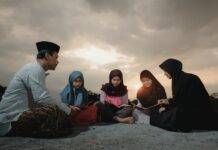Textbooks play a key role in the process of knowledge in Indian classrooms. The question arises: Are these texts ‘biased’ or sufficiently inclusive? An educationist does a comparative analysis, and raises important questions.
Indumathi is currently working with Azim Premji University, Bangalore in the area of assessment. She is pursuing her Ph.D at Tata Institute of Social Sciences. Her interest in education spans in the areas of science pedagogy, science and gender, sociology of education and teacher professional development.

There is an attempt to write textbooks in conversational tone and it appears as if it is talking to the readers. So whom does it assume its readers as? The textbooks through examples or pictures or by representing people can include or exclude people. According to National Curriculum Framework (NCF, 2005), the content in the textbook and teaching should address multicultural and diverse classroom; diversity in terms of gender, class, culture, religion, language and geographic location. There has been studies and reports which indicate that textbooks often represent dominant views and ideas and by doing so exclude many groups of people.
The first section of this article analyses class IX science textbook published by Karnataka textbook society to see how inclusive the book is. The next section describes examples from class IV, Environmental Science (EVS), NCERT textbook to illustrate examples of inclusiveness. This article also draws and builds on my earlier article: Inclusion in science textbooks.
The class IX, science textbook has 27 chapters. The textbook has attempted to present the content in conversational tone. Along with the content in science it includes activities, some messages or images and asks students to think about it, and presents little cases and asks students on their opinion, but this is not the case in all the chapters. Most of concepts are presented as only definitions, laws, principles and problems. The tone also changes while presenting certain concepts. I present few examples from my analysis.
Inclusive of locale context
In the lesson natural resources, it mentions ores and minerals found in various parts of Karnataka. As it mentions Chipko movement and Narmada Bachao Andolan, it does not fail to mention the conservationist from Karnataka- Saalumarada Thimmakka.
Urban as locale
Some examples used and context presented are truer for Bangalore or a city than other parts of Karnataka, for ex. ‘Suhas is in a hurry and he got stuck in heavy traffic’, ‘Balaji fails to turn on the engine when the signal is too long’. Another narration is as follows, ‘On the occasion of mother’s day Ranjani wants to present a beautiful shawl to her mother made out of Shahtoosh wool…’ Most of these examples represent the experiences of a particular class. As it is written in conversational tone and the sentence starts as ‘we all know’, ‘you might have seen’ and so on. The attempt here is to relate to readers but unfortunately it could relate only to a particular segment of readers.
Similarly, there is another striking example. The lesson is on food and the example discusses on preservatives and adulteration. It narrates how Madhu goes to a shopping mall and picks a packed fruit juice. His mother advises him on checking labels and expiry date, she also goes on to discuss how such packed juice contains preservatives and artificial colour. There is also a suggestion at the end of one page activity that this could be played as skit. This clearly presents the context of urban middle class.
The first part of the lesson discusses on malnutrition. It mentions the deficiency disorders, causes and symptoms. This does not dwell into aspects of why many women are anemic in this country or why many people suffer from malnourishment, but suddenly jumps to the green revolution and how the food supply has increased. Though there is scope and space to discuss societal problems related to food, nutrition and deficiencies and making this chapter inclusive, it has failed. The chapter moves on to discuss preservation of food.
Gender representation
All the pictures of scientists in the book are male except for the picture of Marie Curie. In a chapter on Photoelectric effect and laser there is cartoon of three men discussing the nature of light. The text mentions ‘ Analogy and conversations of scientists are given in the following figure.’ The men in the picture are middle/ upper class and the attire clearly stereotypes that scientists ought to be men and middle class (refer to fig 1.1). Many research work and analysis of textbooks have revealed this stereotype. Women appear in marginal roles in science textbooks and there is an absence of positive female role models for girls to identify with. Women were presented in traditional roles as mothers and sisters (Bhog 2002, p. 1640). Though NCF has recognized many such issues and critiqued the presentation of science as sacrosanct, the textbooks written even today still carry stereotypical image of science and not inclusive of many groups.
As I was searching for good examples and recommendations for inclusive textbook, I came across EVS textbooks of class III, IV, V of NCERT. I have chosen few examples from class IV book to indicate how textbooks can attempt and be inclusive.
The contents itself suggests that it covers diverse range of topics. For example, The valley of flowers, A river’s tale, From market to home, Nandita in Mumbai, Reaching Grandmother’s house, Pochampalli, Changing families: all suggest that the textbook covers wide range of issues your
own riddle with them’. ‘Have you ever seen a parade?’ Such presentation of the text provides scope for bringing in views of students and their understanding and does not present content as sacrosanct which is discussed earlier.
There is a conscious attempt made in the EVS textbook to present multicultural and diverse views. The images and pictures and students’ names are also chosen with care so as to be representative of all class, caste, religious and linguistic backgrounds. The textbook committee of Karnataka textbook society represents members mostly from Bangalore which could be one of the reason for its urban flavor. Some of this could also be addressed by choosing a textbook committee that represents people from different background and diversities. Along with teachers and educationists, designers, professionals from different disciplinary background can also be chosen to write textbooks together.
“It is also possible that students do not accept the knowledge presented in the text as it is. They bring in their own interpretations; teachers also play an important role in presenting the text. But textbook is the only source or reading material available for many students in India and they play a vital role and hence there should be care to represent diverse learners and commitment to equity” (Indumathi, 2014 Majumdar and Mooij 2011) also note that multiple and conflicting ideas when presented help to understand diverse view points and enhance equity and inclusiveness.











